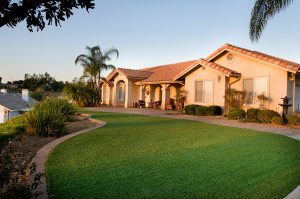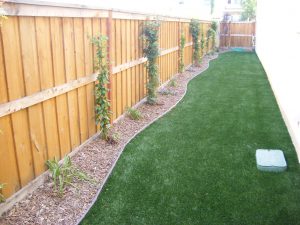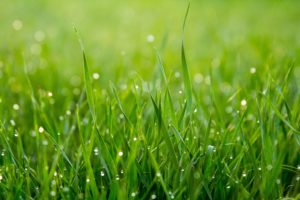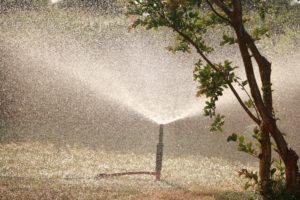The Advantages of Artificial Turf vs. Natural Grass
We want to discuss the main differences between artificial turf vs. real grass so that you can decide for yourself what is best for you and your home.

Artificial Grass
Composed of synthetic fibers made to look like natural grass, artificial grass has a lifespan of up to 25 years. There are a variety of artificial grasses available now, varying in type of material, pile height, and color. The three different materials used to make artificial turf include polypropylene, polyethylene, and nylon. You can also choose your desired height of the blades of grass, known as the pile height. If those aren’t enough choices, don’t forget about color. There is a large variety of artificial grass colors – even pink or blue!
In order to decide between all of these options, you must think about how the artificial lawn will be used. Will it primarily be used by the pets? Do you plan to use it as a putting green? Or are you just looking to install it as your home lawn, where the family can hang out and the kids can play? For the latter purpose, artificial grass with a medium pile height made of polyethylene is the most popular. With multiple shades of green and some brown thrown in there, your artificial home lawn will look like a healthy natural lawn. Think really hard about the lawn’s purpose and an expert can help you narrow down your options.

What are the benefits of Artificial Grass?
Low Maintenance
Artificial grass doesn’t need much maintenance. Just a rinse down to remove dust, periodic brushing, and raking out large debris. The biggest plus is that it doesn’t require watering, which is huge in areas like Southern California where water is scarce, and costs are rising.
Year-Round Quality
A lawn of artificial grass looks great all year round, no matter the climate or season!
Environmentally friendly
No need for pesticides, fertilizers, and fungicides! Artificial grass also decreases pollutants and carbon emissions from gas-powered tools like mowers.

Natural Grass
Many San Diego homes still have a natural grass lawn. You can seed the desired area or lay down sod. Sod is pre-grown natural grass and comes in rolls. There are a large number of different species of grass, varying by blade, growth, season, shade, and water requirements. You have to pick the right natural grass for your climate.
To name some of the most popular grass species for lawns: bent, bermuda, fine fescue, Kentucky bluegrass, ryegrass, and tall fescue. These species’ blades vary from narrow, flat, sharp, pointed, hair-like, and even round. Some grow fast, low, or in bunches. The amount of watering can range from once every week to twice a week for natural grass.
It takes time to maintain a healthy green lawn. Natural lawns have to be mowed, aerated, fertilized and monitored for weeds and diseases. These tasks ensure that the lawn is pulling in as many nutrients as possible in order to stay healthy and lush.

Cons of Natural Grass
-Maintenance tools can get costly & contributes to noise/air pollution
-Lawn water is expensive
-Non-organic fertilizers can be toxic
-Doesn’t always look perfect
Environmental Impact of both Artificial Grass and Natural Grass
Artificial grass and natural grass can hurt and help the environment in their own ways. Artificial grass saves water. On the other hand, real grass is often sprayed with pesticides that contaminate water systems.
How to Choose
We have shared some of the benefits as well as drawbacks of both artificial grass and natural grass. From our experience, natural grass is more costly over time than artificial grass. While the upfront costs of artificial grass are more, you will end up saving more money and local water supply in the long run. Please contact Tuscany Pavers today for more information and a free quote.

